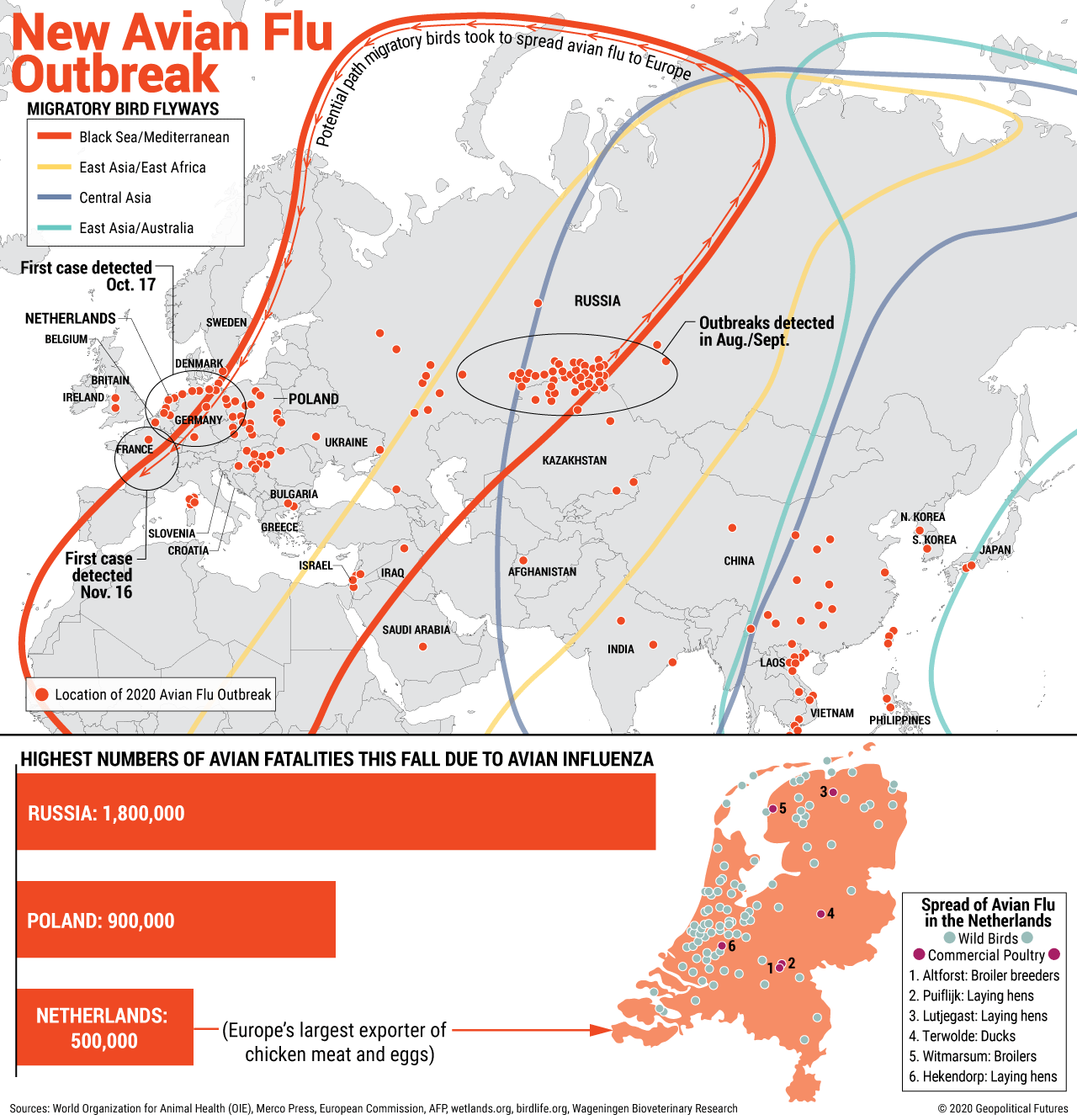Over the past few weeks, there has been an increasing number of reports of a new strain of avian influenza, H5N8. The rapid spread has been attributed in part to overlapping migratory patterns across Europe and Asia. The strain is highly contagious and pathogenic, meaning birds that have been infected can experience severe symptoms and a high mortality rate can result. The virus has affected both wild birds and commercial poultry, and farmers across the globe have already culled millions of chickens. In Russia and Europe, producers culled at least 3.4 million chickens by the end of November.
There are two main concerns with the outbreak. The first is the effect on food supplies. The level of food insecurity globally is already rising due to the coronavirus pandemic and climatic events. According to the latest U.N. figures, global food prices reached a six-year high in November. The Food and Agriculture Organization’s Food Price Index rose 3.9 points from October to November to 105 points, a 6.5 percent increase year over year. The second concern is the possibility that the flu can be transferred to humans through a mutation in the virus. Such mutations are rare but not impossible, and given the fallout from the COVID-19 pandemic, we are keeping an eye on how this outbreak develops.





